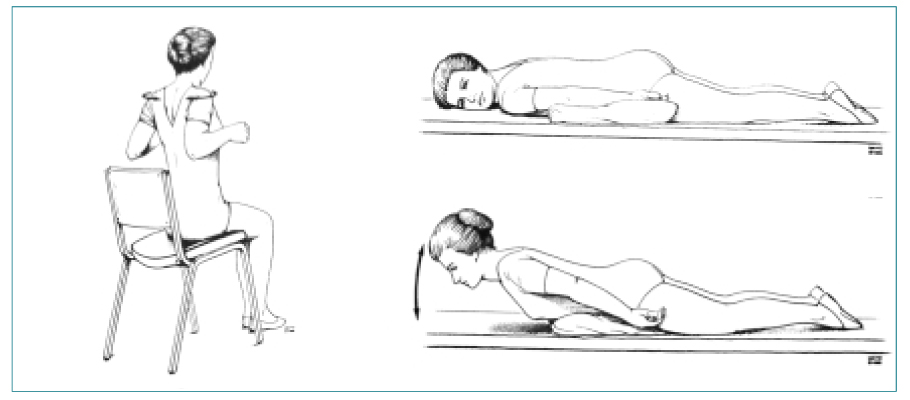J Korean Med Assoc.
2005 Sep;48(9):847-856. 10.5124/jkma.2005.48.9.847.
Osteoporosis
- Affiliations
-
- 1Department of Orthopaedic Surgery / Shoulder, Elbow and Sports Service, Konkuk University School of Medicine and Hospital, drpark@chol.com
- KMID: 1958309
- DOI: http://doi.org/10.5124/jkma.2005.48.9.847
Abstract
- Although exercise is effective to prevent or to treat osteoporosis, it is not certain how much exercise is needed. Therefore the amount of exercise should be dependent on the individual's ability to exercise and the bone mineral density, and the type and method of exercise should be individualized. Patients with osteoporosis should be careful not to fall or slip down and should avoid strenuous spinal motion. The goal of treatment of osteoporosis is not only to increase bone mineral density but also to improve general body health.
MeSH Terms
Figure
Reference
-
1. Aloia JF, Cohn SH, Ostuni JA, Cane R, Ellis K. Prevention of involutional bone loss by exercise. Ann Intern Med. 1978. 89:356–358.
Article2. Diddle AW. Athletic activity and menstruation. South Med J. 1983. 76:619–624.
Article3. Anderson JM. The female athlete triad: disordered eating, amenorrhea, and osteoporosis. Conn Med. 1999. 63:647–652.4. Williams M. Oligomenorrhoea and amenorrhoea associated with exercise. A literature review. Aust Fam Physician. 1984. 13:659–663.5. Bunt JC. Hormonal alterations due to exercise. Sports Med. 1986. 3:331–345.
Article6. Henley K, Vaitukaitis JL. Exercise-induced menstrual dysfunction. Annu Rev Med. 1988. 39:443–451.
Article7. Waldrop J. Early identification and interventions for female athlete triad. J Pediatr Health Care. 2005. 19:213–220.
Article8. White CM, Hergenroeder AC. Amenorrhea, osteopenia, and the female athlete. Pediatr Clin North Am. 1990. 37:1125–1141.
Article9. Cumming DC. Exercise-associated amenorrhea, low bone density, and estrogen replacement therapy. Arch Intern Med. 1996. 156:2193–2195.
Article10. Sandler RB. Muscle strength assessments and the prevention of osteoporosis. A hypothesis. J Am Geriatr Soc. 1989. 37:1192–1197.
Article11. Kontulainen S, Kannus P, Haapasalo H, Heinonen A, Sievanen H, Oja P, et al. Changes in bone mineral content with decreased training in competitive young adult tennis players and controls: a prospective 4-yr follow-up. Med Sci Sports Exerc. 1999. 31:646–652.
Article12. Calbet JA, Moysi JS, Dorado C, Rodriguez LP. Bone mineral content and density in professional tennis players. Calcif Tissue Int. 1998. 62:491–496.
Article13. Simkin A, Ayalon J, Leichter I. Increased trabecular bone density due to bone-loading exercises in postmenopausal osteoporotic women. Calcif Tissue Int. 1987. 40:59–63.
Article14. Bachmann GA, Grill J. Exercise in the postmenopausal woman. Geriatrics. 1987. 42:75–77. 81–85.15. Ayalon J, Simkin A, Leichter I, Raifmann S. Dynamic bone loading exercises for postmenopausal women: effect on the density of the distal radius. Arch Phys Med Rehabil. 1987. 68(5 Pt 1):280–283.
Article16. Evans WJ. Exercise training guidelines for the elderly. Med Sci Sports Exerc. 1999. 31:12–17.
Article17. Kriska AM, Bayles C, Cauley JA, LaPorte RE, Sandler RB, Pambianco G. A randomized exercise trial in older women: increased activity over two years and the factors associated with compliance. Med Sci Sports Exerc. 1986. 18:557–562.18. Morita S, Jinno T, Nakamura H, Kumei Y, Shinomiya K, Yamamoto H. . Bone mineral density and walking ability of elderly patients with hip fracture: A strategy for prevention of hip fracture. 2005. Injury.19. Jones CS, Turner LW. Non-equipment exercise-related injuries among US women 65 and older: emergency department visits from 1994~2001. J Women Aging. 2005. 17:71–81.
Article20. Ryan SD, Fried LP. The impact of kyphosis on daily functioning. J Am Geriatr Soc. 1997. 45:1479–1486.
Article21. Papaioannou A, Adachi JD, Winegard K, Ferko N, Parkinson W, Cook RJ, et al. Efficacy of home-based exercise for improving quality of life among elderly women with symptomatic osteoporosis-elated vertebral fractures. Osteoporos Int. 2003. 14:677–682.
Article22. Chow RK, Harrison JE. Relationship of kyphosis to physical fitness and bone mass on post-menopausal women. Am J Phys Med. 1987. 66:219–227.
Article23. South-Paul JE. Osteoporosis: part II. Nonpharmacologic and pharmacologic treatment. Am Fam Physician. 2001. 63:1121–1128.24. Sinaki M. Postmenopausal spinal osteoporosis: physical therapy and rehabilitation principles. Mayo Clin Proc. 1982. 57:699–703.25. Sinaki M, Mikkelsen BA. Postmenopausal spinal osteoporosis: flexion versus extension exercises. Arch Phys Med Rehabil. 1984. 65:593–596.26. Berard A, Bravo G, Gauthier P. Meta-analysis of the effectiveness of physical activity for the prevention of bone loss in postmenopausal women. Osteoporos Int. 1997. 7:331–337.
Article27. Dalsky GP, Stocke KS, Ehsani AA, Slatopolsky E, Lee WC, Birge SJ Jr. Weight-bearing exercise training and lumbar bone mineral content in postmenopausal women. Ann Intern Med. 1988. 108:824–828.
Article28. Ekin JA, Sinaki M. Vertebral compression fractures sustained during golfing: report of three cases. Mayo Clin Proc. 1993. 68:566–570.
Article29. Schneider R, Kaye JJ. Insufficiency and stress fractures of the long bones occurring in patients with rheumatoid arthritis. Radiology. 1975. 116:595–599.
Article30. Korcok M. Add exercise to calcium in osteoporosis prevention. JAMA. 1982. 247:1106. 1112.
Article
- Full Text Links
- Actions
-
Cited
- CITED
-
- Close
- Share
- Similar articles
-
- Severe Osteoporosis and Advanced Severe Osteoporosis
- Issues of Compliance in Osteoporosis Medication
- Osteoporosis knowledge assessment and osteoporosis education recommendations in the health professions
- Romosozumab for the treatment of osteoporosis
- A practical approach to secondary osteoporosis - Case studies in Asia


